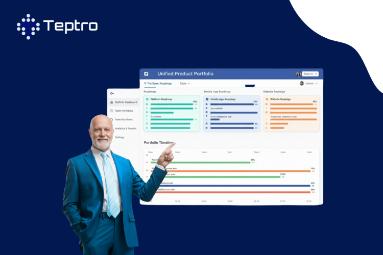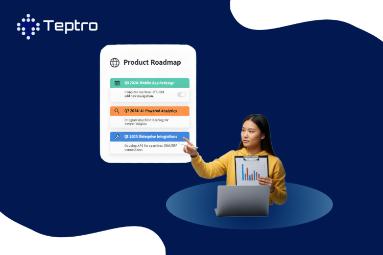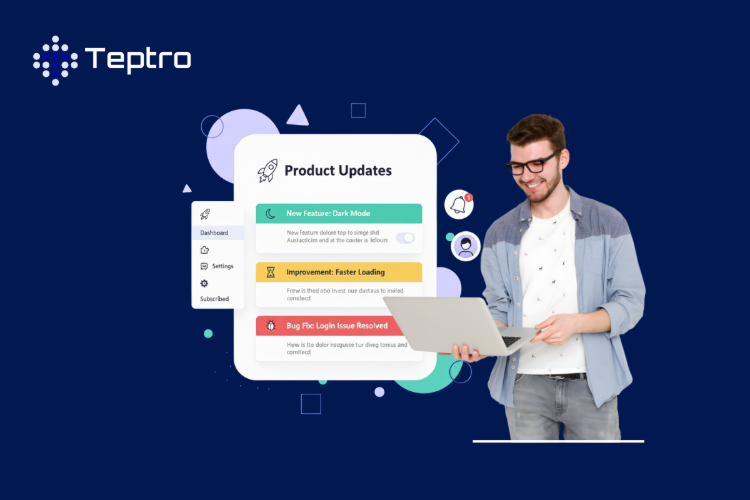Turning Complaints into Opportunities: Access insight into Roadmap Planning Tool
Often, customer complaints are not considered ideal, but guess what? With the right strategy, your organization can convert recurring complaints into practical solutions to address your consumers’ pain points. If consumers’ complaints are not addressed on time , it can affect your brand image, as in most cases, your current customers’ feedback and reviews will serve as deciding factors for perspectives. Don’t worry, you can leverage complaints data into a core topic for an upgraded solution using a robust roadmap planning tool . According to research by Hubstswood’s Complaints Outlook 2021, 64% of customers feel frustrated when they discover a problem with any product, software, or service. However, if their concerns are not solved, the number of complaints can rise to 74%. However, by crafting solutions to these complaints, organizations can show their dedication to catering to customers’ needs and get access to a wide range of data showcasing areas of improvement without having to strategize collecting feedback back and forth using a feedback management system . Utilize centralized product roadmap software to categorize essential data for building improved solutions and effortlessly foster a transparent culture with your customers and stakeholders. Sounds interesting? We know what you are wondering – how can we turn complaints into practical strategies to build better products? Don’t worry, we’ve got you covered! In this blog, we will walk you through identifying reasons for recurring complaints against your offerings, identifying strategies to address complaints with product management and pricing, and building detailed plans to enhance your product or services via a roadmap planning tool like Teptro . What Are The Reasons Behind Your Customer Complaints? Customer dissatisfaction can occur due to varied reasons and loopholes. Let us understand a few customer complaints to identify your organization’s loopholes and why you receive negative feedback over your offerings. 1. Prolonged Waiting Time One of the top reasons behind customer dissatisfaction is the failure to meet customer expectations regarding responsiveness and effectiveness. In today’s decreasing attention span, consumers often expect immediate service and response from organizations when they reach out to businesses for assistance or while exploring their offerings. As per Zendesk’s Customer Experience Trends 2023, 72% of customers expect instant access and assistance. However, when customers wait for long hours without any response, it leads to frustration and dissatisfaction. Continuous delays in responses or unresolved complaints can result in receiving maximized negative feedback as your customers feel unheard, unvalued, and inconvenienced, which ultimately can affect your brand image as well . Solution To avoid long waiting times, it is essential to align your staff with fluctuations in call volume to offer the proper support, especially during peak times. Furthermore, integrating features like callback options can provide waiting alternatives and enhance customer convenience with a roadmap planning tool. Lastly, adapting actively managing resources and implementing customer-centric solutions to mitigate long wait frustrations with more efficient offerings. Data from feedback management systems through roadmap planning tools to refine product strategies, ensuring improved offerings to address customer complaints using roadmap planning tools. 2. A Gap in Quality Control If your company designs a product, you must have come across complaints regarding the lack of quality in the manufacturing procedure . If your product fails to meet expected standards or specifications, it can result in problems like potential defects, malfunctions, and more . These quality issues arise because of production errors, substandard materials, or inaccurate testing procedures. Hence, customers experience dissatisfaction with product durability or performance. However, addressing quality-related issues for your product demands the implementation of quality checks throughout the product development process, with a roadmap planning tool to maintain consistency in the end product, which can be possible through product roadmap software. Solution Implement a robust product roadmap software to meet quality checks and ensure consistency in products right from the design and production stage. By identifying errors in production, utilizing quality material , and redefining the testing process , organizations can address defects and other issues and achieve customer satisfaction with enhanced product durability. 3. Cluttered Product Expectations You may likely receive complaints due to misaligned expectations between what the product aspires to offer and what it delivers. This gap can result in confusing market claims, cluttered product descriptions, or exaggerated features. When customers have a wrong perception of product features or if your product fails to offer what the marketing campaigns claim, it increases customer dissatisfaction. Solution To address these issues, businesses must foster transparency in marketing communication and clearly portray product capabilities, limitations, and solutions they offer. Offering clear and detailed product information, honest reviews, or demonstrations can assist in aligning customer expectations with actual product offerings through a roadmap planning tool and minimize the chances of negative feedback from unrealistic expectations or perceptions of your product. Strategies to Convert Complaints into Improved Opportunities 1. Listen to Your Customer’s Complaints The first step to improving the solution is to listen to customers. Let your customers express their concerns without interruptions . This will help you understand the problem’s root cause and collect data for optimizing the product roadmap to establish a better solution with advanced features. 2. Address Customer Complaint Accurately Offering timely solutions to your customer’s complaints can lead to increased customer loyalty and brand image. This step aids in building a trusted community by acknowledging complaints, offering swift responses for inconvenience, and updating customers with newly upgraded and released products or services via a feedback management system. 3. Provide Compensation When it Feels Right In a few cases, providing compensation like refunds or discounts can assist in addressing concerns to show your organization values every customer. Moreover, solving the situation and understanding if offering compensation would be appropriate for the customer’s expectations is essential. However, remember that this solution will only apply in a few circumstances. 4. Introduce a System For Complaint Resolution Deploying a standard system to manage complaints is very important. This approach includes training your employees, from customer service to product developers, to access and categorize complaint data for further advancements. You can utilize a centralized feedback system to analyze varied negative feedback and pick a group of priority data to convert it into a roadmap toward improving the product. 5. Leverage Customer Feedback Complaints are valuable feedback that enables businesses to identify areas for improvement. Utilize complaints to enhance customer experience and avoid repeating complaints in the future. However, this approach can be achieved by evaluating customer feedback and pinpointing accurate market trends. 6. Optimize Product Roadmap A product roadmap is a consistent official blueprint to improve customer experiences, catering to solving the problems that customers are facing or offering advanced solutions. However, when considering customer complaints, address the pain points reported by your consumers and implement them in the Roadmap for better planning. However, your roadmap planning tool aligns product solutions with your organization’s goals. How to Utilize Customer Complaints Data into a Product Roadmap? Responding to complaints isn’t the only solution, but utilizing the data of complaints or negative feedback data into a product roadmap can be a robust strategy for your organization . You will improve product offerings by addressing concerns, making customers trust again , and fostering a positive brand image. Sounds interesting? Here’s how you can incorporate negative feedback into your roadmap planning tool 1. Collect and Evaluate Customer’s Complaints Make sure to follow a systemized feedback collection process as an initial step. Furthermore, categorize data as per the theme, features, or other and include feedback channels through which you received channels . Select the data based on the recurring issues and common pain points. 2. Prioritize Essential Customer Complaints You will receive many complaints, but not all seem urgent or actionable. Hence, it is important to prioritize the urgency and importance of a group of complaints based on a few factors like severity, number of customers affected with concern , or frequency of Complaints posted. Furthermore, focus on addressing problems that will bring customer satisfaction and improve user experience. 3. Identify the Root Cause for the Complaint The next step should revolve around understanding the reason behind recurring complaints. Comprehend the root causes as it will assist your team in crafting impactful solutions by outlining a detailed plan via product roadmap software. However, this approach may require additional steps like conducting interviews, usability tests, or evaluating data. 4. Outline Prioritized Complaint Data on the Roadmap planning tool After prioritizing data and underlying root causes, it’s time to create a robust product roadmap. However, you must understand essential product features or requirements that must be addressed. In this step, you may have to identify whether you need to add new features, redesign existing ones, or if there is a requirement for fixing bugs . 5. Set Realistic Goals Define your goals for each Complaint on the Roadmap. This will help set actionable metrics to monitor progress and analyze success after implementation. However, this step can include metrics like customer satisfaction scores, improved product usage, and more . 6. Allocate Right Resources Allocate resources, dedicate specific and realistic deadlines, and budget to implement changes mentioned in the product Roadmap tool feasibly. Furthermore, ensure that you have accurate support to make the project successful with diverse teams like product developers, engineers, and custom and design support. 7. Keep Your Stakeholders Aligned with the Project Communicate with stakeholders about complaint data and how your solutions will bring data. Share different product roadmaps with stakeholders, outlining your plan and highlighting its impact on your business. 8. Evaluate Solutions Once you implement a solution based on complaint data, your job doesn’t stop there. Consider tracking its effect on the customer’s life, collecting feedback with a roadmap planning tool, and evaluating its impact based on newly collected feedback. However, the goal must be following a continual feedback loop to drive ongoing product improvement. Make Impact with Teptro’s Roadmap Planning Tool A roadmap planning tool can revolutionize your brand image with the right strategies. Collect all types of feedback, and don’t forget to respond to customers, even negative ones. You can create more opportunities to excel and gain profits even with complaints to improve your offerings and gain customers’ trust. Follow the strategies discussed in the blog to enhance your product development cycle. Do you want to improve your product offerings? Teptro can help you excel with centralized software and exceptional features. Get in touch with us to know more about product roadmap features or product management pricing today!














